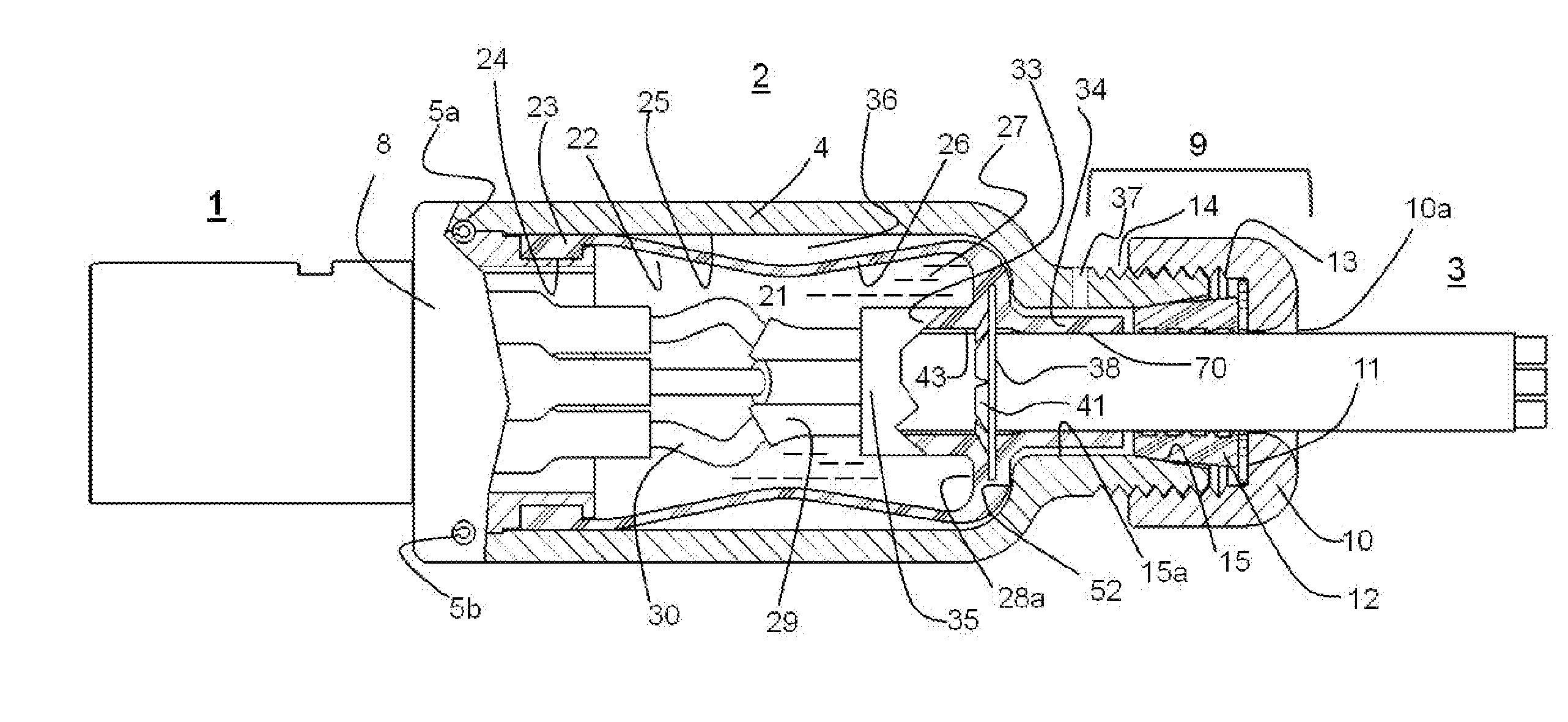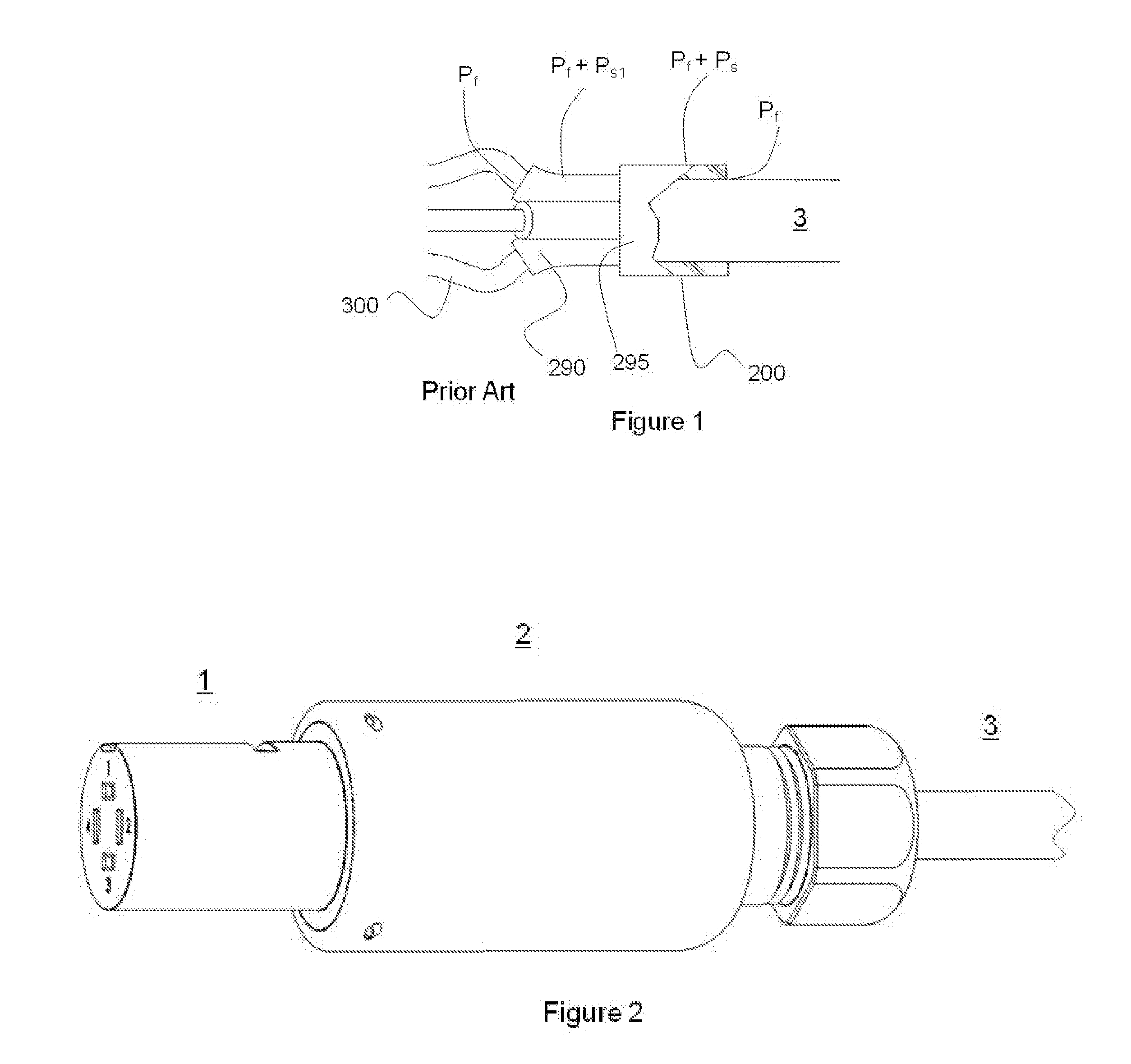Cable termination
a cable termination and cable technology, applied in the direction of cable terminations, coupling device connections, instruments, etc., can solve the problems of requiring specialized chemicals, molds and other equipment, cleaning, controlled laboratory environment, mold delamination, etc., to eliminate potential leak paths and other failure modes inherent in the termination, the effect of simple termination architectur
- Summary
- Abstract
- Description
- Claims
- Application Information
AI Technical Summary
Benefits of technology
Problems solved by technology
Method used
Image
Examples
first embodiment
[0032]FIG. 2 is an overall oblique view of invented termination 2 used to join connector 1 to cable 3, and FIG. 3 is a partially sectioned view of the assembly shown in FIG. 2. FIG. 4 is a partially sectioned exploded view of the assembly shown in FIG. 2.
[0033]Looking now at FIGS. 3 and 4, underwater connector 1 is mechanically joined to the forward end of termination shell 4 by spring pins 5a and 5b. Pins 5a and 5b seat in respective through holes 6a and 6b in termination shell 4, and in respective slots 7a and 7b in connector back shell 8, thereby both rotationally and axially locking termination shell 4 to connector 1. Cable 3 passes into the rearward portion of termination shell 4 through cable grip assembly 9. Connector 1, shell 4, and grip assembly 9 altogether form the termination's protective housing. Shell 4 may be made of any substantially rigid material such as hard plastic or metal that is suitably rugged for the intended application.
[0034]Cable grip assembly 9 comprises...
second embodiment
[0053]There are alternate ways that would be useful in some circumstances to retain chamber enclosure 22 including boot seal portion 28 in position relative to cable 3 within the termination assembly. As an example of such circumstances, the cable to be terminated might have an outer jacket that's too soft to be adequately held in place by a push-nut type fastener such as that just described. An alternate termination construction is shown in FIGS. 9-12 and 14. In this alternate embodiment plain washer 80 replaces retainer 38 of the earlier embodiment. Washer 80 is sized with an inner diameter slightly larger than the outer diameter of cable 3, and an outer diameter somewhat larger than inner diameter 15 of shell 4. Standoff 83 (FIG. 10) has a disc-shaped end 84 with through-hole 85 and standoff rods 86. Through-hole 85 is sized just slightly larger than the outer diameter of sleeve 33 of chamber enclosure 22. Standoff rods 86 are inserted into sockets (not shown) in the rear wall of...
PUM
 Login to View More
Login to View More Abstract
Description
Claims
Application Information
 Login to View More
Login to View More - R&D
- Intellectual Property
- Life Sciences
- Materials
- Tech Scout
- Unparalleled Data Quality
- Higher Quality Content
- 60% Fewer Hallucinations
Browse by: Latest US Patents, China's latest patents, Technical Efficacy Thesaurus, Application Domain, Technology Topic, Popular Technical Reports.
© 2025 PatSnap. All rights reserved.Legal|Privacy policy|Modern Slavery Act Transparency Statement|Sitemap|About US| Contact US: help@patsnap.com



